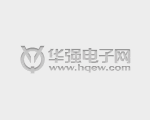IC power consumption is directly proportional to its supply voltage. If your system has an external low-voltage power supply available, you can use it as an IC power supply--the LT1052 can operate at voltages as low as 2.6V. If you add a conversion circuit, use the IC output to run it yourself. Adding this feature will increase the overall power efficiency from 77% to 83%.
If designers want to use Linear Technology's LT1072 switching regulator in buck mode and need to handle high input voltages, achieving maximum efficiency becomes a problem. For example, if you need to convert a device from 20V to 5V at a lower power level of 1.25W, the device's quiescent current (usually 6 mA) will be an important part of the circuit's power consumption.
Relatively speaking, the quiescent current is not affected by the input voltage, so the IC power consumption is proportional to its supply voltage. If your system has an external low-voltage power supply available, you can use it as an IC power supply--the LT1052 can operate at voltages as low as 2.6V. If you do not have this auxiliary power supply, you can add a conversion circuit and use the IC output to run itself (Figure 1). Adding this feature will increase the overall power efficiency from 77% to 83%.
When the power supply is first powered up, the regulator has no output: R8 and D7 keep C6 in an uncharged state and ground the gate of MOSFET Q4. Since Q4 is turned off, the boosted voltage pulls the gate of Q3 high through R5. As the supply voltage rises, Q3 turns on, applying all of the input voltage to the IC, causing the regulator to start operating.
Once the regulator starts and the output voltage rises, C6 begins to charge through R8. When the Q4 gate voltage reaches approximately 2.5V, Q4 turns on, pulling the Q3 gate voltage to ground, turning it off. This shutdown operation removes the IC's input voltage. Since C5 discharges to the IC, D5 becomes positively biased, supplying a supply voltage from the output voltage to the IC.
Since C5 discharges to the IC, D5 becomes positively biased, supplying a supply voltage from the output voltage to the IC.

Efficient energy consumption circuit diagram
In the event of a power failure or a temporary short circuit, causing the output voltage to drop below the minimum value for normal operation of the LT1072, diode D7 will quickly discharge C6 and supply the input voltage to the IC again. When the voltage rises again, it is restored. Normal operating conditions.
Figure 1 After the power is turned on, the converter circuit supplies power to the regulator IC from the output of the power supply. Powering the IC with a lower voltage output instead of an input increases the power efficiency from 77% to 83%.
Dynamic Harmonic Filtering Compensation Device
Harmonic power quality suppression cabinet is a new type of power electronic device for dynamic harmonic filtering. It can filter out 51 harmonics, and the maximum capacity of a single cabinet can reach 600A. Through advanced algorithms and high-performance core electronic components, the shortcomings of conventional harmonic filters and reactive power compensation are overcome, and the harmonic filtering and reactive power compensation functions are systematically realized.
Dynamic Harmonic Filtering Compensation Device,Pfc Hybird Compensation Cabinet,Compensation Active Harmonic Filter,Dynamic Filter Compensation Device
Jiangsu Sfere Electric Co., Ltd , https://www.elecnova-global.com